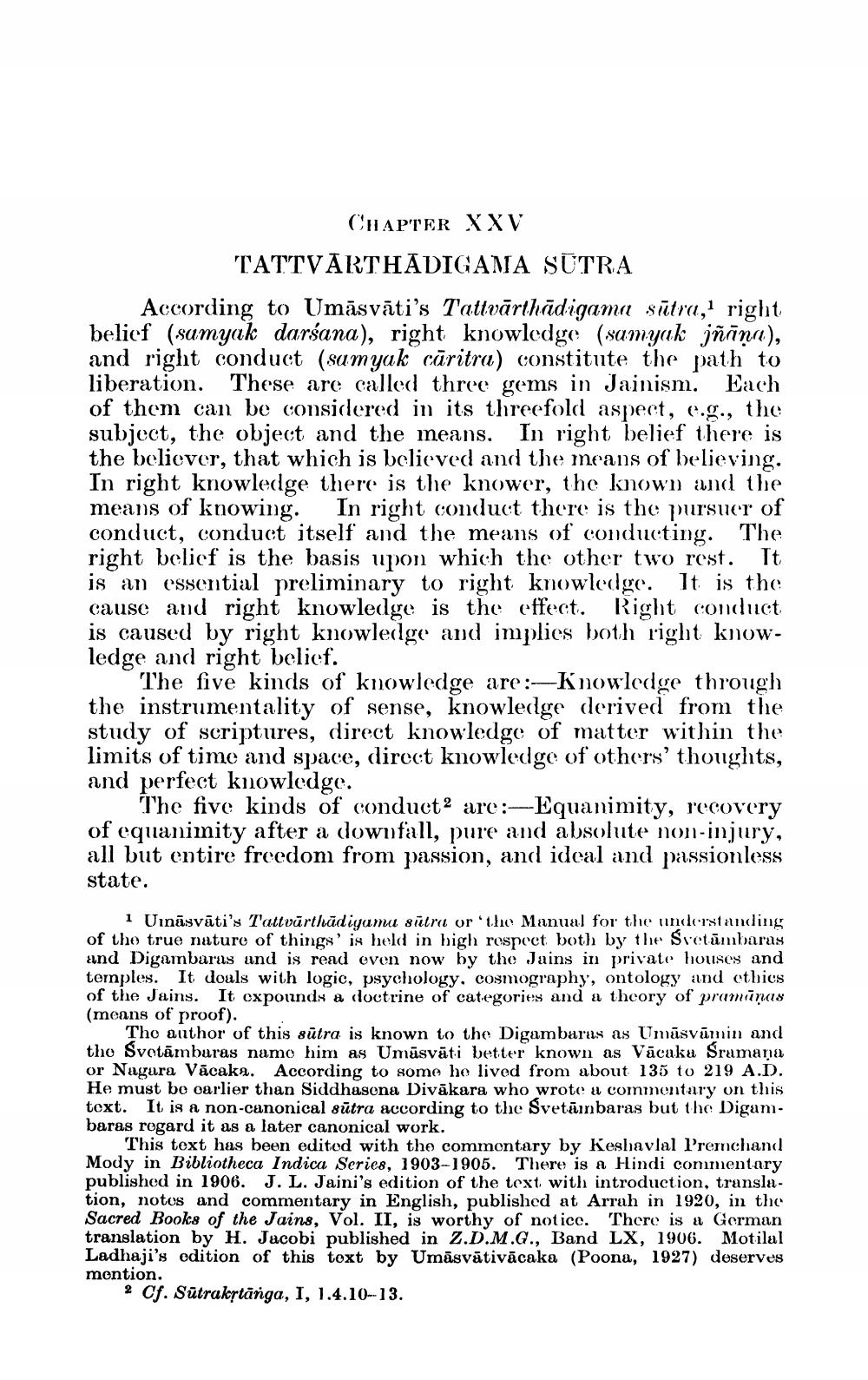________________
CHAPTER XXV TATTVĀRTHĀDIGAMA SUTRA According to Umāsvāti's Tattvārthādigama sūtra, right belief (samyak darśana), right knowledge (samyak jñāna), and right conduct (samyak cāritra) constitute the path to liberation. These are called three gems in Jainism. Each of them can be considered in its threefold aspect, e.g., the subject, the object and the means. In right belief there is the believer, that which is believed and the means of believing. In right knowledge there is the knower, the known and the means of knowing. In right conduct there is the pursuer of conduct, conduct itself and the means of conducting. The right belief is the basis upon which the other two rest. It is an essential preliminary to right knowledge. It is the cause and right knowledge is the effect. Right conduct is caused by right knowledge and implies both right knowledge and right belief.
The five kinds of knowledge are:-Knowledge through the instrumentality of sense, knowledge derived from the study of scriptures, direct knowledge of matter within the limits of time and space, direct knowledge of others' thoughts, and perfect knowledge.
The five kinds of conducta are:-Equanimity, recovery of equanimity after a downfall, pure and absolute non-injury, all but entire freedom from passion, and ideal and passionless state.
cand right knowlery to right knowher two rest. It
of the true nature and is read ovenchology. coses and
1 Uınāsvāti's Tattvürthādigama sutra or 'the Manual for the understanding of the true nature of things' is held in high respect both by the Svetāmbaras and Digambaras und is read even now by the Jains in private houses and ternples. It douls with logic, psychology, cosmography, ontology and ethics of the Jains. It expounds a doctrine of categories and a theory of pramūnas (means of proof).
The author of this sūtra is known to the Digambaras as Umāsvāmin and tho Svetāmbaras namo him as Umāsvāti better known as Vācaka Sramana or Nagura Vācaka. According to some he lived from about 135 to 219 A.D. He must be earlier than Siddhasena Divākara who wrote a commentary on this text. It is a non-canonical sutra according to the Svetainbaras but the Digambaras rogard it as a later canonical work.
This text has been edited with the commentary by Keshavlal Premchand Mody in Bibliotheca Indica Series, 1903-1905. There is a Hindi commentary published in 1906. J. L. Jaini's edition of the text with introduction, translation, notos and commentary in English, published at Arrah in 1920, in the Sacred Books of the Jains, Vol. II, is worthy of notice. There is a German translation by H. Jacobi published in Z.D.M.G., Band LX, 1906. Motilal Ladhaji's edition of this toxt by Umāsvätivācaka (Poona, 1927) deserves mention.
2 Cf. Sūtrakstānga, I, 1.4.10-13.




